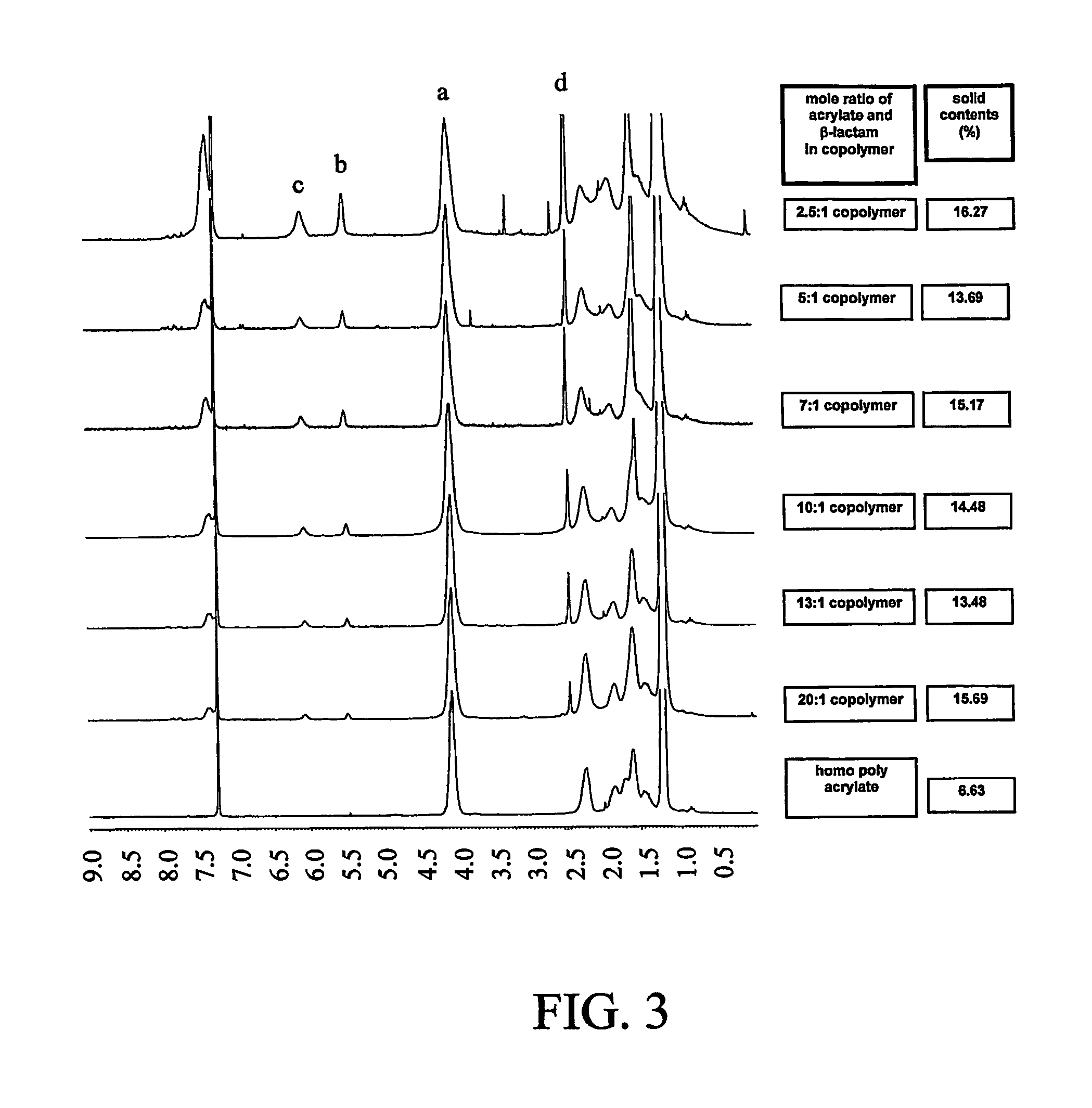Nanoparticles for drug-delivery
a technology of nanoparticles and drug delivery, applied in the field of nanoparticles for drug delivery, can solve the problems of inability to effectively administer bioaffecting agents, inability to meet the needs of patients,
- Summary
- Abstract
- Description
- Claims
- Application Information
AI Technical Summary
Benefits of technology
Problems solved by technology
Method used
Image
Examples
example 1
[0230]FIG. 2 illustrates a preparation of a modified β-lactam drug. The final product in this example is the N-methylthiolated β-lactam, which is a water-insoluble solid having a melting point of 92-93° C.
[0231]2-Chlorobenzaldehyde 21 was coupled with p-anisidine, to give imines 23. Staudinger coupling of acetoxyacetyl chloride with imine 22 gave C3-acetoxy N-aryl protected β-lactam 23. Hydrolysis of acetoxy group under basic conditions gave the C3-free hydroxyl β-lactam 24. Acrylation of free hydroxyl β-lactam 24 with acryloyl chloride gave C3-acryloyl N-aryl protected β-lactam 25. Dearylation of β-lactam 25 with ceric ammonium nitrate gave N-dearylated β-lactam 26, followed by methylthiolation with N-methylthio-phthalimide affords C3-acryloyl N-methylthio 4-lactam 27 which is a white solid, mp 92-93° C.
Procedure for the Synthesis of N-(4-Methoxyphenyl)-(2-chlorophenyl)imine (22).
[0232]To a solution of p-anisidine (9.64 g, 78 mmol) in 25 ml of CH2Cl2 was added 2-chlorobenzaldehyde ...
example 2
[0237]Nanoparticles of copoly(ethylacrylate, N-methylthiolated β-lactam) (CPETL) were prepared by a radical polymerization using potassium persulfate as the initiator and the sodium salt of dodecyl sulfate as the surfactant. The mixture of (±)-(3S,4R)-4-ortho-chlorophenyl-3-acryloyl-1-(methylthio)azetidin-2-one (500 mg, white solid, mp 92-93° C.), as synthesized in Example 1, and ethyl acrylate (500 mg) was warmed to 70° C. with slow stirring under a nitrogen atmosphere and was stirred for 30 minutes to form a homogeneous solution. The nano-pure water (7.94 ml) containing dodecyl sulfate, sodium salt (ACROS, 10 mg) was added with vigorous stirring and the mixture was stirred for 60 minutes, to give the milky pre-emulsion state. The solution of potassium persulfate (SIGMA, 5 mg) in nano pure water (0.3 ml) was added under nitrogen atmosphere, and the reaction was stirred for 5 hours at 70° C. The additional solution of potassium persulfate (SIGMA, 1 mg) in nano pure water (0.1 ml) wa...
example 3
[0260]FIG. 14 illustrates the modification of the anti-inflammatory drug sulindac in preparation for reaction with an acrylic monomer to form a nanoparticle. An acrylate, 2-hydroxyethyl acrylate, reacts with sulindac, a water-insoluble solid, to synthesize an ester of sulindac as a highly viscous liquid. The liquid can be further processed to form a nanoparticle polymer that is uniformly dispersed in aqueous media.
PUM
| Property | Measurement | Unit |
|---|---|---|
| diameter | aaaaa | aaaaa |
| diameter | aaaaa | aaaaa |
| diameter | aaaaa | aaaaa |
Abstract
Description
Claims
Application Information
 Login to View More
Login to View More - R&D
- Intellectual Property
- Life Sciences
- Materials
- Tech Scout
- Unparalleled Data Quality
- Higher Quality Content
- 60% Fewer Hallucinations
Browse by: Latest US Patents, China's latest patents, Technical Efficacy Thesaurus, Application Domain, Technology Topic, Popular Technical Reports.
© 2025 PatSnap. All rights reserved.Legal|Privacy policy|Modern Slavery Act Transparency Statement|Sitemap|About US| Contact US: help@patsnap.com



